Damien Hirst (June 7, 1965, Bristol) is a British ensemble artist whose deliberately provocative art appeals to beauty, death, and rebirth, as well as medicine, technology, and mortality. Hirst presented dead animals in formaldehyde as art. Like the French artist Marcel Duchamp, Hirst used ready-made objects for a shocking effect and in this process questioned the very nature of art. In 1995, he won the Tate Prize.
Cool, provocative, inventive, and very rich. In September 2008, Hirst sold his entire Beautiful Inside My Head Forever collection at Sotheby’s for £111 million ($198 million), breaking the record for a single artist auction. And the cost of his famous skull is over £15 million.
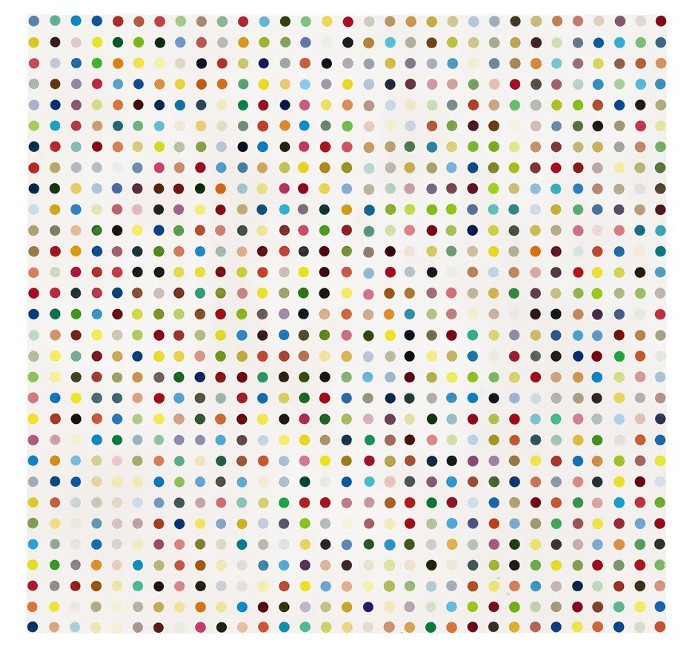
What’s so special about it and why is it so expensive?
- Hearst feels modern pop culture and understands what it takes to push for a public response;
- Creativity focuses on two big themes: death and money. They always attract attention;
- Damien is very good at selling his art;
- The works scream “Money! MONEY! Money!”, which attracts rich buyers;
- Ьanaged to turn money into art, not art into money.
The most daring and most scandalous artist of our time. The most famous living English artist of our time. His shark in formaldehyde and his skull inlaid with diamonds have become symbols of modern art. His strange works are worth more than Picasso and Monet’s. He is the richest artist of the 21st century and the richest in everything. Today we will talk about Damien Hirst and his art.
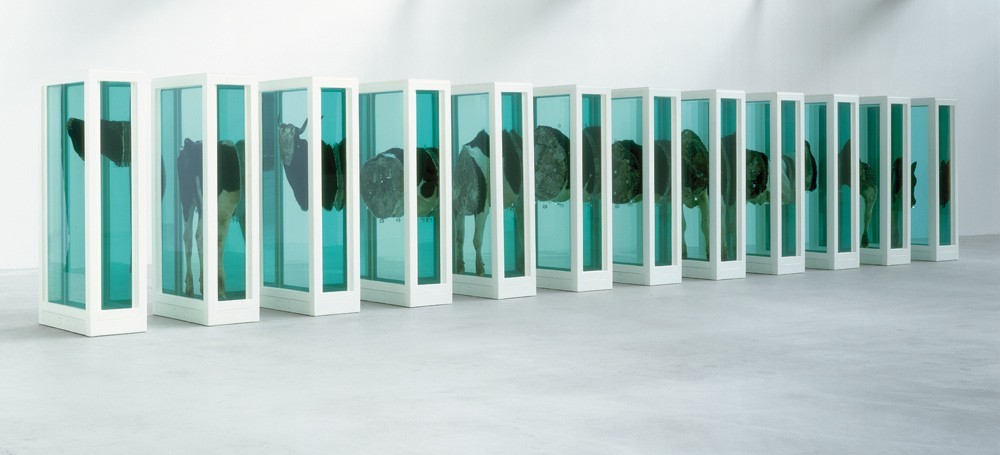
On the way of the outcasts
Hist’s biography contains a lot of things that provoke social exclusion. As a child, he had everything that a difficult child can boast: a dysfunctional family, a single mother, an unloved stepfather, arrests for shoplifting, problems in school, drugs, and alcohol. And the period of drug experiments with the accompanying unrestrained behavior has extended for decades. And it ended relatively recently, when three sons grew up, there was a restaurant business, a farm in the north of England and a reputation as a philanthropist and taxpayer. Damien Hirst was born on 7 June 1965 in Bristol, England. He was seriously into painting towards his graduation. He loved painting so much that he started painting everywhere and everywhere. Worked as an orderly and made sketches, for example, in the morgue.
After two unsuccessful attempts to enter art schools in Leeds and London was admitted to Goldsmiths College. Here he was finally lucky enough to show his creative talents, and Damien became an informal leader of a small group of artists, in the spirit of close to punk culture. In 1988, when he organized the Freeze exhibition, a fateful event took place in his life. It was he who should be the one to count down the new turn of contemporary art. The fact is that at that time the tone in contemporary art was set by Paris and New York, and in England, there were no corresponding galleries or young artists. The British elite, which had conserved itself, recognized nothing but the Joseph Turner Prize. With Hirst and his Freeze, everything suddenly changed.
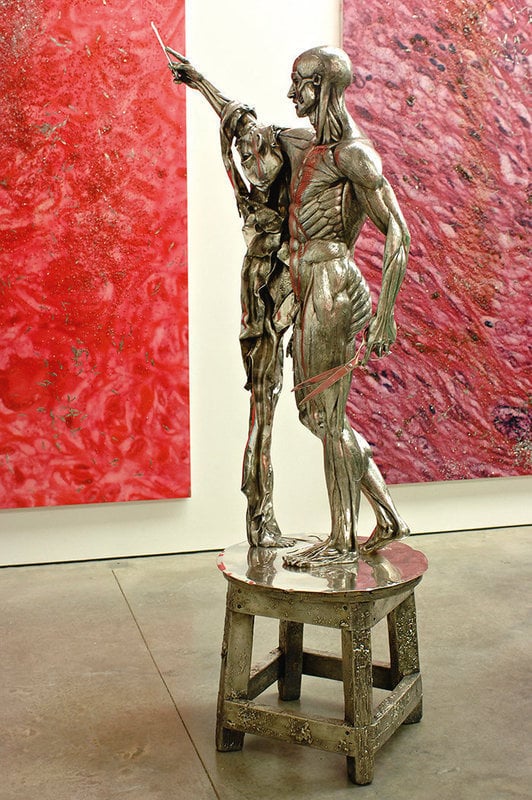
Should an artist be able to draw?
It is generally believed that an artist is one who can draw. But nowadays, this definition is hopelessly outdated. Artists do anything but a classical painting: they bring urinals, mountains of garbage, dead animals, and even their own defecation to museums. They draw mud, cigarette butts, and female bodies. They put on real shows and shock the public with more and more antics. After the changes in art, the educational institutions for artists have also changed.
In the 1980s, London’s Goldsmiths College opened the first ever course for future artists, where students were not required to be able to draw or paint with paints. Instead, future artists learned to critically assess contemporary art. That’s where young Damien Hirst studied.
He came to the world of art at a time when conceptual art had finally squeezed out the usual painting and drawing. In fact, Hearst had almost no paintings as such. The closest to traditional painting is Hirst’s signature colorful circles on the white canvas. However, even these simple circles Hirst does not draw on their own – for him do it, assistants. Then what is Hirst famous for?
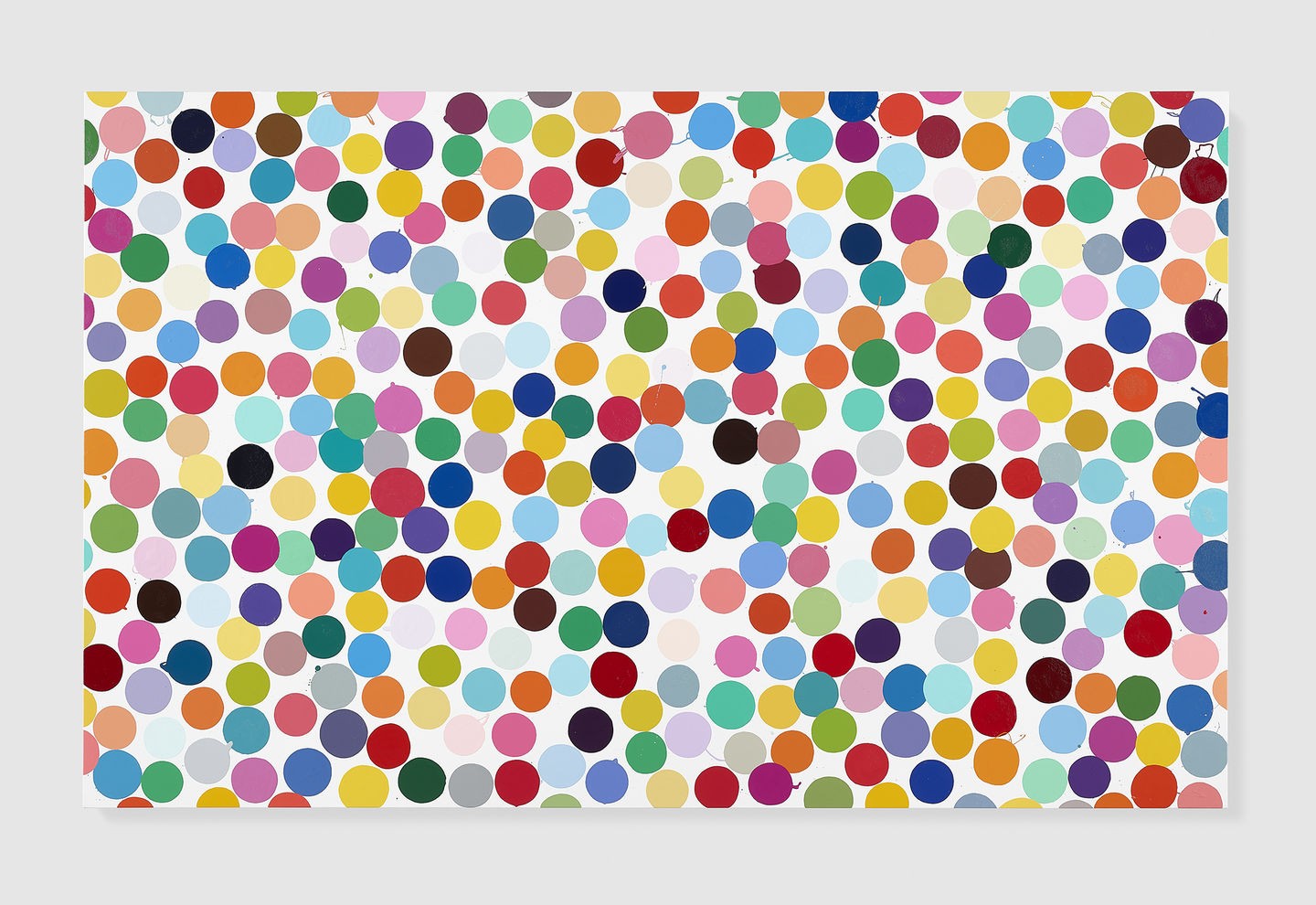
“A Thousand Years”
The main “genre” of Hirst is installations or, as they are sometimes called, minimalist sculptures. Hirst made his first loud installation in 1990, barely graduating from college. The work “A Thousand Years” made even the frequenters of contemporary art galleries shudder. It is said that Charles Saatchi himself stood in front of Hearst’s installation with his mouth open.
Hearst built two glass cubes connected to each other. One of them had a box with fly larvae in it, and the other had a bloody cow head and an electric fly was installed. The flies hatched in the light and flew to the cow, attracted by the smell of blood, but immediately found themselves on the bare wires of the flapper and died. Such is the chilling image of the infinite cycle of life and death, not covered with any metaphor and circumlocution. And death and blood are all real.
In fact, the main theme of Hirst’s creative work is a discussion of the essence of death and the impossibility of its embodiment by means of art. “The idea of death – as the artist said – is unacceptable, so the only way to deal with it is to detach or have fun. Hirst’s works on this subject are usually the most scandalous and at the same time the most piercing. It is they who have brought Hearst’s popularity and worldwide recognition.
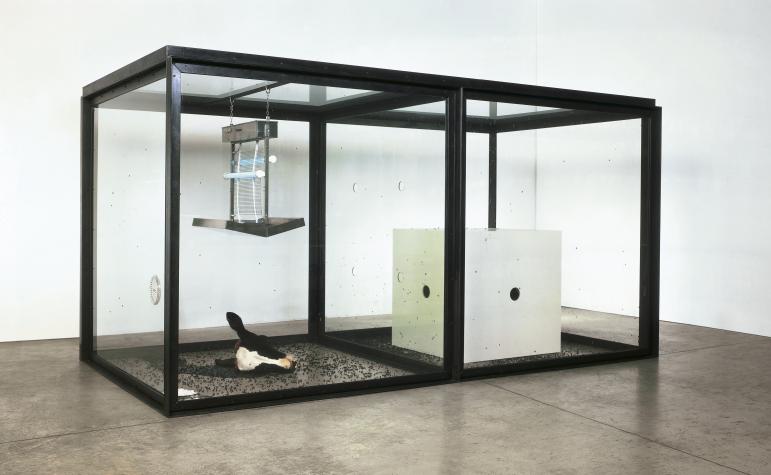
“The Physical Impossibility of Death in the Mind of Someone Living”
His most famous art was work with the intricate title “The Physical Impossibility of Death in the Mind of Someone Living”. This time, Hirst did without a decaying cow’s head and a pool of blood. The main character of “Physical Impossibility” was a giant shark carcass, preserved in a solution of formalin. Hirst put the shark in a transparent pool and exhibited it as a work of art. In fact, there’s nothing particularly shocking about the gesture.
The artist bases his installation on the oldest story in the history of art – images of animal carcasses. The carcasses were painted by many, from Rembrandt to Francis Bacon. But Hirst does everything quite differently: instead of bleeding flesh, he shows the viewer a lifeless, as if plastic, the body of an animal sealed in a transparent glass box. No dramatic expression in the spirit of Sutin, no overwhelming emotions, no bright colors. Only a transparent glass box in a white hall flooded with electric light. Hearst’s death is cold, sterile, and silent, which can be even more terrifying than bloody carcasses.
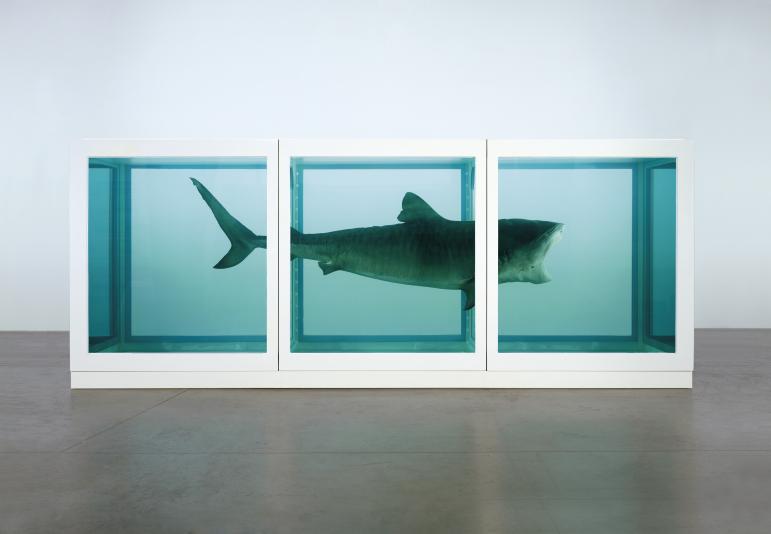
The work caused a phenomenal resonance and became a symbol of radical new art. The shark is motionless, literal, and effective, which is why it arouses great interest and sometimes even strong irritation. Hearst doesn’t tell the viewer what to think; it shows something that everyone has to think about for himself. “I want the viewers to make an effort and feel uncomfortable,” he says. – The viewers need to be made to feel responsible for their own view of the world, not just to introduce them to the artist’s viewpoint so that all they have to do is criticize him”.
Decomposition has stopped, the time has stopped. The creatures of nature have received false immortality. “Decomposition is a more terrifying thing than death,” says Hearst, but death is a more interesting subject for him: “I will die – and I want to live forever. I can’t avoid that, and I can’t get rid of that desire. I want to see at least a glimpse of what it is like to die. The fear of death is inherent in all of us. Damien Hirst has solved this problem for himself – you just have to face death often. When he was a student, he would go to the morgue.
Hirst Pharmacy
Hirst’s installations, placed in sterile transparent boxes and exhibited in white museum halls without windows, resemble in some way laboratories or operating rooms. And the artist takes the place of an impartial surgeon who cuts reality with an imaginary scalpel. In one of his self-portraits, Hirst even poses in a surgeon’s costume (if you suddenly decide that the artist took a brush in his hands – do not be seduced, a self-portrait painted by his assistants).
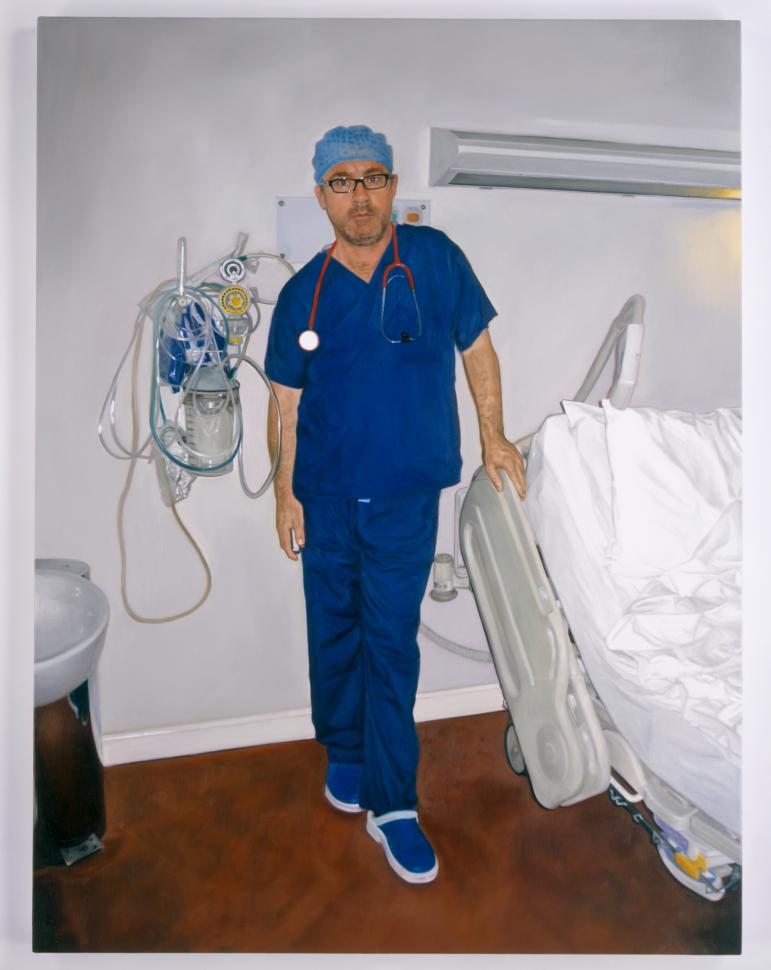
Actually, the medical theme is one of Hirst’s favorites. He’s repeatedly used drugs and pills in his installations. He has whole showcases depicting the pharmacy and the doctor’s office. For example, one of his early works is a shelf with medicines and is called “Bodies”. Why “bodies”? Because the human body has long since ceased to be flesh and blood and has become a set of chemical elements. There is no life in it, only a set of functions.
And in 1996, Hirst, together with his friends Jonathan Kennedy and Matthew Freud even opened a restaurant in Notting Hill “Pharmacy”, the interior of which repeated Hirst medical installations. The walls of the restaurant covered the famous shelves with medicines, and in the toilet, there were lockers with latex gloves and medical candles. The restaurant was loved by celebrities. Here you could meet Hugh Grant, Kate Moss, and even Madonna.
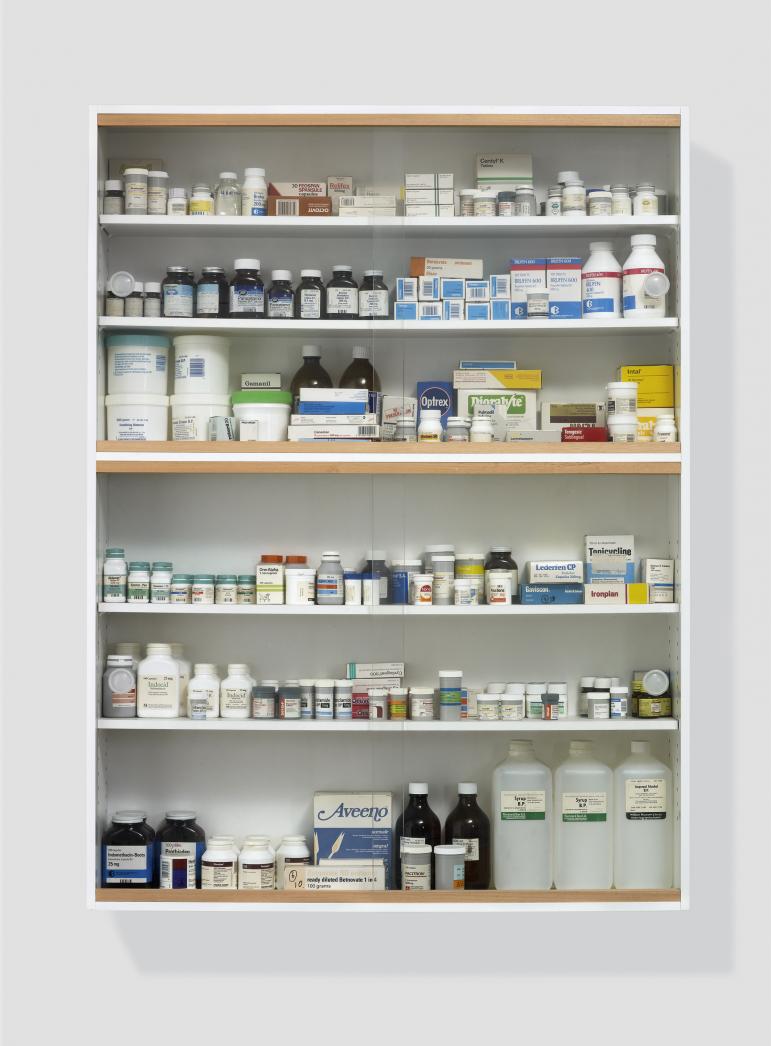
The Art of Simple Numbers
You can look for a long time in these works the tragic absurdity of art that has merged with the world of capital. In fact, the phenomenon of Damien Hirst and the entire generation of British artists of the late 1990s in another. They were the pioneers of a new matter. And the peculiarity of the method is that their works are made of materials that are subject to an intense process of aging. Until recently, some fiberglass, foam board, or plastic was the most popular material for pop art. But artificial substitutes are no longer in fashion. And the most creative and investment attractiveness began to use works made with the use of biomaterials. The decay, rotting, and decomposition of flesh in Hirst’s installations were no exception. In general, this could already be enough. The commercial success story of the British icon is indicative.
The famous Shark was caught off the coast of Australia for £6,000. It was ordered by Hirst directly for a gallery for £50,000. Then it was valued at one million pounds and at the end of 2004 exhibited at the Gagosian Gallery, where it was purchased by the hedge fund manager Steve Cohen for 6.5 million pounds. Later he presented a shocking installation to a contemporary art museum. Two years later, in 2006, another smaller shark in the Wrath of God version was sold to the Mexican gallery Hilario Galguera for $4 million. And another for the same amount was sold to the Korean Corporate Museum of Modern Art.
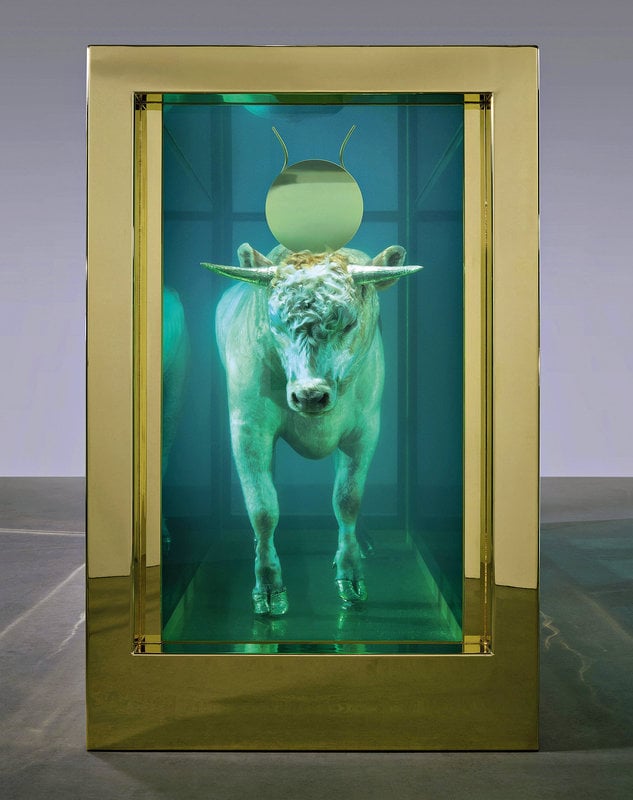
The capital development and change of scenery
In September 2000 the exhibition Damien Hirst: Models, Methods, Approaches, Assumptions, Results, and Findings was held in New York. In twelve weeks, the exhibition was visited by 100 thousand people, all works were sold. In June 2007, his chemist’s locker with colorful pills went at Sotheby’s auction for a record 19.3 million dollars. Another object – a mini sculpture “For the love of God” was sold for 100 million. A life-size human skull. True, not simple, but platinum and studded with eight and a half thousand diamonds. And again, the absolute record.
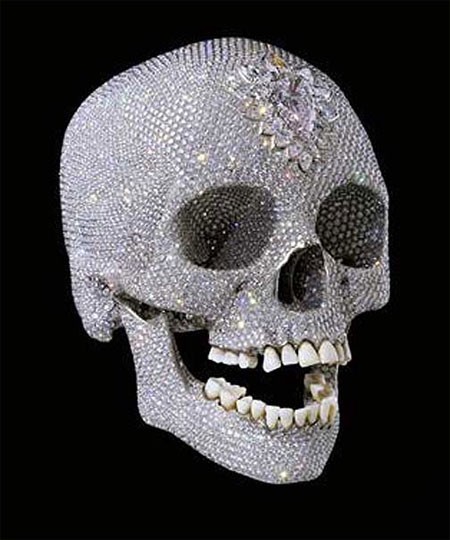
In October 2008, Hirst and his company Science Ltd. headed the rating of ArtReview magazine, which annually identifies the most influential people in the art world. But did Damien Hirst suggest in the early 1990s that visualization of decay would be so popular? We don’t think so. When, a few years later, his famous sharks, sold to various collectors and museums, began to age, Hirst admitted frankly: “Specialists warned me that I had not chosen the most perfect method of preserving them. They thought that I was positioning my work for the future, but I had a different task – I just wanted to convey the idea”. And he offered them to replace the exhibits with new ones.
In addition to artworks and sensational exhibitions, Hirst has video clips for the Blur group, joint space exploration projects with the British National Aerospace Centre, and the concept of the iconic London restaurant Pharmacy. He is currently working on transforming Toddington Manor in Cheltenham into a Gothic museum of his work. In Dudbridge, he’s converted an old car factory into a studio. One of the latest news is that Hirst has stopped doing installations and returned to normal painting. He’s trying himself out in 3D.
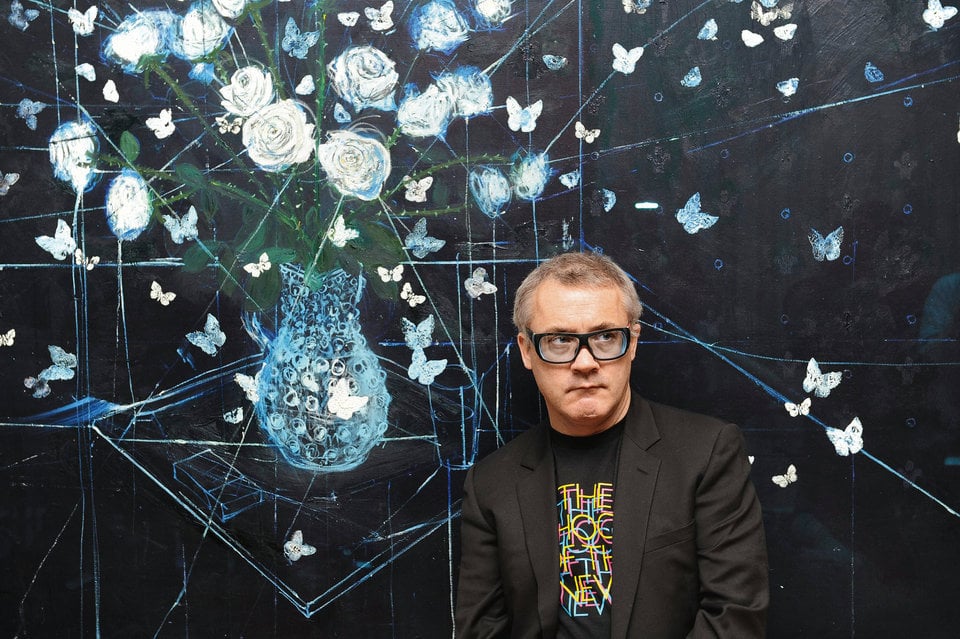
They say he’s not impressive yet. But, knowing his energy, we can assume – in any case, you have to be careful: enfant terrible something conceived and, therefore, a new stage is coming in contemporary art!






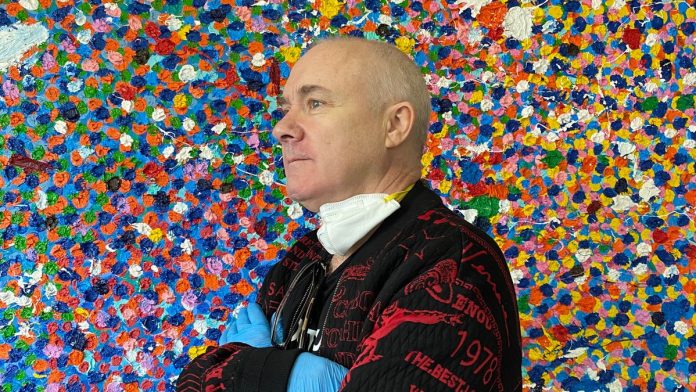


















[…] artists worked on the new version of “Tropicana”. Damien Hirst with his fairytale unicorn in formalin also joined their […]